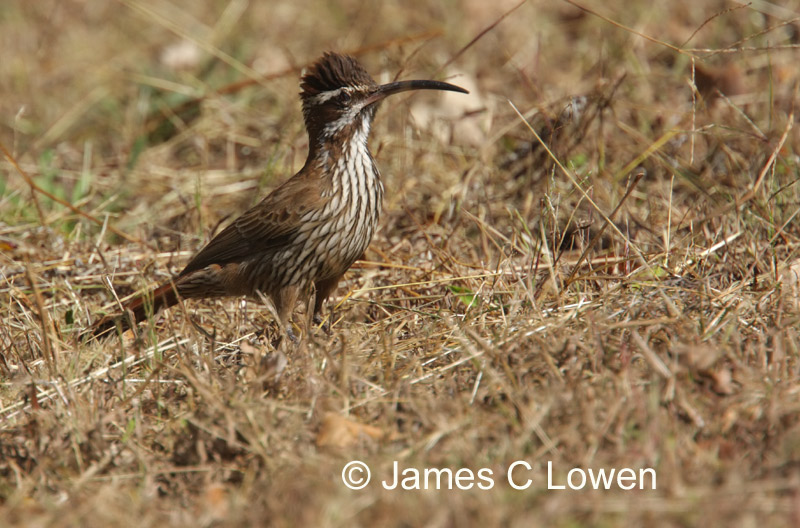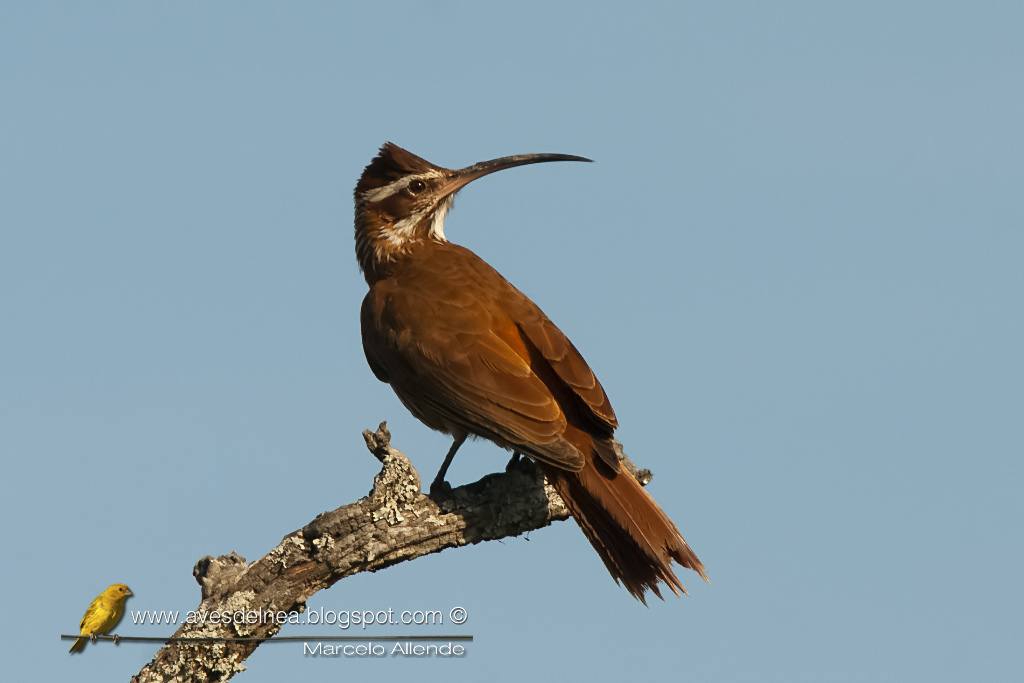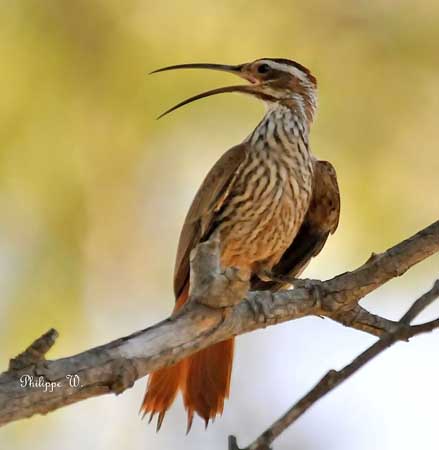
Drymornis bridgesii
TAXONOMY
Drymornis bridgesii Eyton, 1849.
OTHER COMMON NAMES
French: Grimpar porte-sabre; German: Degenschnabel-
Baumsteiger; Spanish: Chinchero Grande.
PHYSICAL CHARACTERISTICS
Body length 12 in (30–31 cm). A large woodcreeper with a
long tail and a stout, strongly downcurved, blackish bill that
makes up about one-third of the body length. The back and
tail are colored olive-brown, with white stripes along the side
of the face, a white throat, and a brown-and-white striped
belly.
DISTRIBUTION
Occurs in southern Bolivia, southern Brazil, western Paraguay,
and northern and central Argentina.
HABITAT
Inhabits relatively open, lowland tropical forest and scrub, as
high as about 1,650 ft (500 m).
BEHAVIOR
Usually occurs singly or in pairs. The song is a series of loud,
fast, shrieks.
FEEDING ECOLOGY AND DIET
Forages for arthropods on tree-trunks and stout branches, and
sometimes on the ground.
REPRODUCTIVE BIOLOGY
Lays two or three eggs in a nest in a tree-cavity or abandoned
woodpecker hole. The sexes share incubation and care of the
nestlings.
CONSERVATION STATUS
Not threatened. A widespread and locally abundant species.
SIGNIFICANCE TO HUMANS
None known.
Photo Gallery of - Scimitar-billed woodcreeper




 Animalia Life
Animalia Life